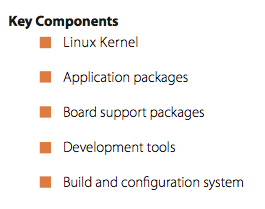The past year or so has seen a number of new technologies emerge based on The Linux Foundation’s Yocto Project, including several that have gone on to be certified as officially Yocto-compatible through the project’s new Compliance Program.
Swedish Enea is one of those; in fact, along with Mentor Graphics and Wind River, it was among the very first companies to be named Yocto Project compliant.
 That happened back in August, but recently Enea has made the news again, this time for the release of version 2.0 of its Yocto-based Enea Linux distribution. Launched late last month, Enea Linux v2.0 is a hardened, commercial grade Linux distribution for next-generation communications and networking systems.
That happened back in August, but recently Enea has made the news again, this time for the release of version 2.0 of its Yocto-based Enea Linux distribution. Launched late last month, Enea Linux v2.0 is a hardened, commercial grade Linux distribution for next-generation communications and networking systems.
More than half of the world’s macro cell base stations and more than three out of four LTE base stations run on Enea software, the company says. Now, with this new update, Enea Linux is reaching a new level of maturity.
120 Packages for Telecom Needs
The Yocto Project was created in October 2010 with the aim of simplifying the build process for teams working on embedded Linux systems such as routers, NAS devices and the like, regardless of the hardware architecture that’s used.
“Yocto is becoming the de facto standard for building and configuring embedded Linux,” Enea says on its website. “By utilizing Yocto, Enea Linux leverages the open source community to provide a mature product in less time, and customers meet a familiar environment in which there is no lock-in or hidden agendas.”
Enea first announced its Yocto-based Enea Linux distribution back in March, complete with more than 120 packages chosen specifically for telecom needs. Since then, the integrated, modular system has been providing a comprehensive cross-development tool chain and runtime environment for common networking target architectures.
 An All-Linux Solution
An All-Linux Solution
Enea’s Light-Weight Runtime Threads (LWRT) technology, for instance, offers improved real-time characteristics in Linux user-space, delivering scheduling, message passing, and resource management functionality. The result is that applications can run with improved determinism and minimal overhead, thus addressing some commonly held concerns about traditional Linux solutions.
LWRT is an all-Linux solution based on a single Linux kernel, and it combines high throughput and low latency. The user-mode scheduler in LWRT can handle context switches deterministically in significantly fewer cycles than native Linux can, Enea says.
With guaranteed performance and quality of service, Enea Linux supports both reference and customer target hardware and can be customized or adapted as needed.
‘We See Broader Uses of Linux’
The new release is significant, and “it will be interesting to watch as software continues to play a larger role in everything from infrastructure to networking to storage to applications,” 451 Research senior analyst Jay Lyman told Linux.com.
“I think it also highlights how we see broader uses of Linux in virtual and cloud computing server instances, mobile devices, embedded systems, etc., but we also continue to see the advantages of access to source code and customization in specific industries and verticals,” Lyman added. “In the case of Enea, we are seeing a Linux distribution specifically tuned to meet the connectivity, scalability and performance demands of today’s wireless industry.”


